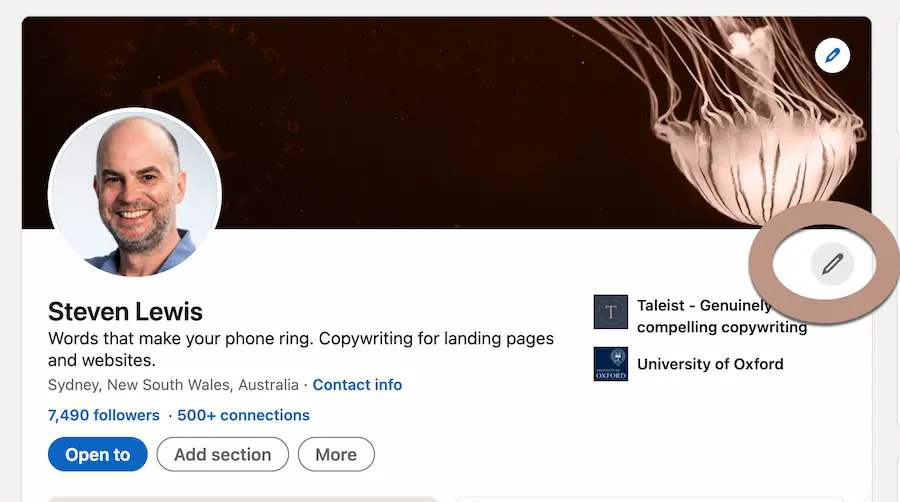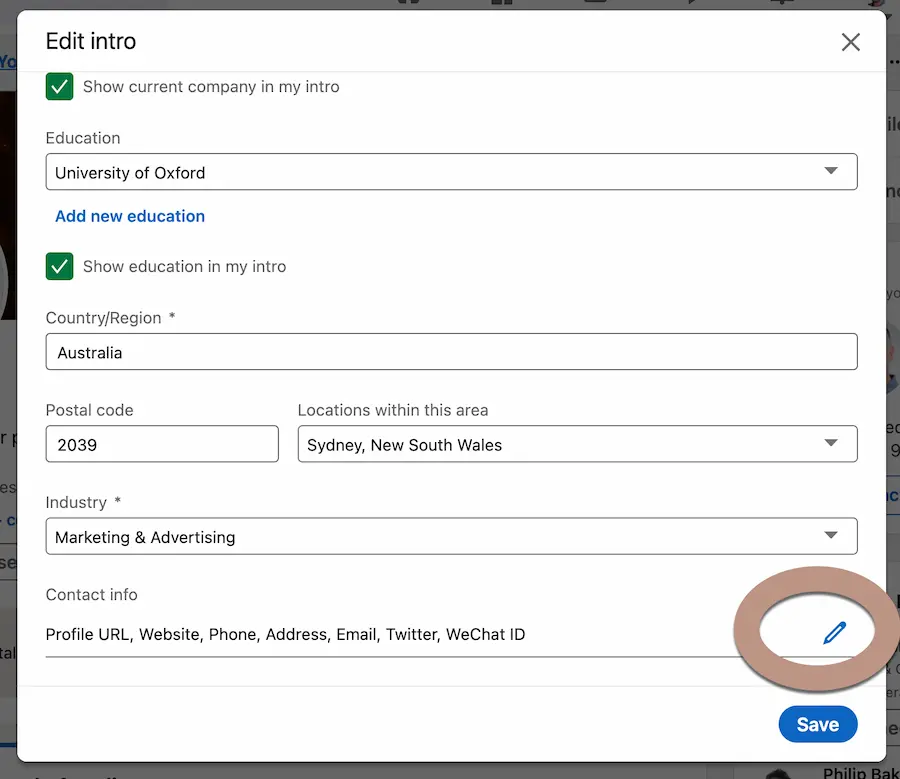Your LinkedIn questions answered
LinkedIn is a business networking bazaar, but it can be scary to navigate. Every move can seem high stakes when it’s happening in front of several hundred million people.
However, LinkedIn looks more and more like an essential part of doing business online. So you don’t want to hesitate to get started.
We’ve created this blog post as a resource for those who want to learn more about succeeding on LinkedIn. It’s a companion to our course on Winning At LinkedIn.
[toc]
How to increase LinkedIn engagement
LinkedIn is a powerful tool. You can grow your online presence and connect with potential new clients or employers. Here are some tips to help you increase engagement on your LinkedIn profile…
1. Write and publish regularly
When it comes to engaging followers, you need a strong online presence. That means creating and posting content on a regular basis.
On LinkedIn, your posts should highlight your accomplishments. However, limit them to those that are useful to your followers.
You can also demonstrate your unique knowledge. You can do that by getting into discussions and remarking on posts.
2. Build offline connections
Don’t just lurk on LinkedIn. Get involved by liking and commenting on content. However, that alone won’t mean you’ll be remembered beyond the occasional notification.
Take some time to build a connection with LinkedIn connections through email or messaging.
Personal messages create a sense of closeness between you and others. That closeness makes connections more likely to share your content.
3. Take initiative to engage with others
Networking is a two-way street. People are much more likely to pay attention and engage with someone who shows interest in them first.
Commenting or sharing other people’s content is a great way of getting your name out there and attracting followers.
And you want to keep your audience engaged with what you have to say. You can accomplish this by ensuring that your content is:
- Interesting
- Encourages a continuing discussion
4. Become a member of LinkedIn groups
Joining a LinkedIn group is an effective tactic for boosting engagement on LinkedIn.
LinkedIn groups offer a platform to showcase your expertise and build rapport with like-minded individuals.
Find groups that include your target audience. Then join in on the conversations. Make valuable contributions. Like and comment on other people’s content. Share relevant material whenever possible.
How to get noticed on LinkedIn
LinkedIn is an amazing platform for professional networking. But networking takes time and effort. If you’re new on LinkedIn, getting noticed can be difficult. Here are some tips to help you stand out from the crowd…
1. Write an interesting headline
The headline of your LinkedIn profile is the first thing people see about you. It sets the tone and reflects you and your business value. So your headline has to:
- Be interesting
- Present you as someone others would want to connect with
2. Include keywords
Keywords are the words people use to search for someone — “contracts lawyer”, “insurance broker”, “man with the golden gun”.
Just as with blogging, keywords make all the difference in the visibility of your LinkedIn profile. For that reason, it’s important you include industry-related keywords into your profile.
You’ll get a better idea of how to use keywords by going through the LinkedIn profiles of other industry professionals. Take note of how they integrate keywords in their page.
You can also explore job postings and include the keywords they use in their descriptions.
3. Ask for recommendations
Employers are always on the lookout for employees with something more to offer than the average Joe. Similarly, businesses looking for suppliers want proof the supplier can deliver.
Having LinkedIn recommendations proves how great other people think you are.
When asking for LinkedIn recommendations, try to make sure it’s kept short and succinct. Recommendations shouldn’t bore others with unnecessary details. Instead, they should narrate how well you performed during certain tasks or projects.
There’s more in our guide to writing a LinkedIn recommendation.
How to create a custom LinkedIn URL
You might have noticed that your LinkedIn URL is a garble of numbers and letters. It’s unattractive to share, and you’re certainly not going to remember it.
A customised URL will make your LinkedIn profile easier to share. It’ll also help Google notice you. Most custom LinkedIn URLs look like this:
http://www.linkedin.com/in/username
But if you have a common name, you might want to consider tweaking your URL a little. For instance, you could add your middle name or a location:
Here’s what you need to do to change your LinkedIn profile URL:
- On your LinkedIn profile homepage, click Edit public profile & URL on the right sidebar
- Click the pencil-shaped Edit icon next to your LinkedIn URL
- Type out your customised LinkedIn URL
The content that works best on LinkedIn
With more than 600 million LinkedIn members worldwide, the platform has become a valuable tool for sharing articles or posts.
Here are six types of content to launch your profile onto other people’s radars…
1. Blog posts
Blog posts are a must for every business. Not only does blogging connect you with your audience, it helps build relationships that can lead to conversions.
You can write posts for your website (see our SEO Content Marketing Course for more) then repurpose them as LinkedIn articles.
2. Industry updates and research
LinkedIn is a platform where users are not just looking for new connections. They’re also looking for material relevant to their industry. That makes LinkedIn an ideal place to post research-based case studies, reports and white papers.
Industry insights offer your audience material that could help them in their careers. They offer you positioning as an authority. And they bring attention to your personal brand.
3. Third-party resources
It may sound counter-intuitive to share content from others. However, this is another step in the relationship-building process.
You want to be perceived as a source of valuable information. Wherever that information originates.
However you earn and maintain that reputation for value, it will get attention on your original content.
4. Company news
Company updates give your followers the scoop on developments. Updates make your company more relatable. Also, they encourage conversation, which in turn builds connections with followers.
What to write in your LinkedIn headline
Your LinkedIn headline is the first thing that users see. And it’s important to make a good first impression. Repeating your job title isn’t the way to do that.
Make your headline stand out with these tips…
1. Use your audience’s language
Your target audience is one important in setting up any social media profile. What do they want from someone like you?
2. Showcase your value proposition
Imagine how many people with your job title are on LinkedIn. Spice things up by using your LinkedIn headline to describe how you help your customers. For instance, your headline could look like these:
Instead of HR manager…
Improving staff engagement through strategic consultation and communication
Or dare we suggest one of ours as a good example. Instead of Director of Copywriting…
Copywriting that makes your phone ring
3. Dump Jargon
It can be tempting to use big words. Big words are popular with people trying to sound authoritative. The problem with jargon is that it’s off-putting to those who don’t understand what you’re trying to say. Also, jargon is never as widely understood as people think.
Stuff jargon into a headline and it doesn’t matter what it all means. No one will bother to decipher it.
However, you can still use industry-specific words to nod to others on the inside. If you’re unsure of which words are appropriate, look up the profiles of leaders in your field. What words do they use in their headlines? And do their headline read well or like jargon marmalade?
How to get more views on LinkedIn
Your LinkedIn profile is your online calling card. To score views from clients, recruiters or your target employers, you need:
- A profile that stands out
- To be found in search
Being found in search means using keywords in your headline. Choose keywords your audience is likely to use when seeking someone like you.
The keywords you want to use are those that highlight your skills and expertise. Examples of such keywords would be “Senior Software Developer”, “UX Design Manager”, or “Product Marketing Manager”.
LinkedIn is a search engine. That means search engine optimisation (SEO) is in play. Having the right keywords in your headline will improve your LinkedIn ranking. That will increase the number of people who view it.
Once you have an SEO content strategy in place, it’s time for a plan of attack. That means:
- Posting regular content
- Liking and commenting on other people’s posts
- Joining groups and publishing articles
By doing this, you’re keeping your profile top-of-mind for people who might be interested in connecting with you.
How to write a good article for LinkedIn
How many people do you know regularly publish articles on LinkedIn? Probably nobody. So writing LinkedIn articles is fertile ground to establish yourself as a thought leader. You get to demonstrate your knowledge and opinions. And you differentiate yourself from everyone else on LinkedIn.
If you’re looking for ideas on how to write a killer LinkedIn article, here are some suggestions…
1. Think about your goal
The first step towards writing a good LinkedIn article is to think about what you’d like to achieve. Is it brand awareness? Or is it traffic and leads for your website or business?
Whatever the goal, identify the desired end result and keep it in mind while writing.
2. Know your target audience
Now let’s turn our attention towards the audience we’re trying to reach and their needs. What kinds of problems are people looking to solve? Why do they read your article? What kind of value does it provide?
3. Make it a conversation
Personalise your writing instead of using cold, mechanical phrases. It builds a relationship when a reader feels like you’re having a conversation. You can’t do that with a formal lecture. Writing conversationally punctures LinkedIn’s sometimes corporate atmosphere.
4. Add a call to action
Never forget that your LinkedIn profile is a way to promote your personal brand. So make the most of your published content. Include a call to action at the bottom of every article.
Encourage readers to like, comment on and share your articles. Engage them in conversation by asking for feedback or opinions.
Always remember the goal is to boost your profile and gain followers. So tailor your call to action to reflect this objective.
How to write an effective LinkedIn summary
The LinkedIn summary is an often underused and underdeveloped tool. It’s the part of your profile designed specifically for you to tell your story. It’s the best place to make a personal connection with others.
Below are some tips on how to write an effective LinkedIn summary. There are many more in our online LinkedIn course…
1. Keep it short and sweet
You’re permitted a maximum of 2,000 characters for your LinkedIn summary. So try to present yourself in the best light without turning your summary into a novel.
2. Add personality
Personalise your summary by including a few of your most relevant triumphs. Be sure they illustrate what sets you apart from everyone else.
3. Don’t sell yourself short
Provide information that doesn’t appear elsewhere on your profile. For instance, if you’re looking for a job as a front-end developer, you might mention your expertise in JavaScript.
4. Be sure to proofread
Spelling and grammatical errors make a bad impression. You want hiring managers to focus on your talents, not the fact that you got “their” and “there” mixed up.
5. Highlight unique skills and attributes
Is there something important missing from your profile? Do you have experience that isn’t immediately apparent? If so, now might be an appropriate time to mention it.
How long should LinkedIn posts be?
LinkedIn allows long posts. However, most people don’t tune into their LinkedIn feed for long-form content.
At the 140-character mark, your LinkedIn posts are cut off with a “See More” button. Any content past that is concealed unless the reader clicks. That’s true regardless of the device your audience is using.
So unless you’re writing a long article on LinkedIn, it’s best to keep your posts concise. With a LinkedIn article, readers are expecting more substance.
Writing articles for LinkedIn is similar to blogging. The key is balance. You want to write an article long enough to get your message across and engage your audience. But don’t be so wordy that they tune out.
How to write a LinkedIn summary with no experience
Newly minted graduates are faced with the gargantuan task of finding their first employment. They also need to deal with another issue: creating a LinkedIn profile that will make people stop and take notice. Here’s how to make it happen:
Mention social activities
Have you ever organised a donation drive? Do you spend your weekends volunteering at a nearby animal shelter? Don’t be afraid to include social work in your LinkedIn profile summary. It demonstrates empathy and a commitment towards social causes, which is almost as essential as technical skills. You can’t put a price on selflessness.
Don’t underestimate your hobbies
Even if you don’t have any work experience, your hobbies and interests can speak volumes to your talents and competencies. Do you blog in your spare time? Don’t be embarrassed to include that in your LinkedIn summary. Talk about how you’ve been creating content, taking your own pictures and marketing your blog for the last three years.
Employers are looking for more than just technical know-how when it comes to hiring new employees. They want to know who you are as an individual and where your passions lie.
Include projects that show your talents
It doesn’t have to be the paint blots you did in primary school. Maybe you built a website for your student organisation. Or you launched a student-run newspaper for your university. All of that should be listed as accomplishments in your LinkedIn profile.
Scores of people have experience interning at a corporation. How many of them designed mobile apps during their spare time? These initiatives demonstrate your leadership skills and creativity.
How to add keywords to your LinkedIn profile
All it takes to find the right keywords to add to your LinkedIn profile is a few Google searches. Finding keywords relevant to your targeted industry or position can be done by going through jobs in your desired positions. Three job descriptions that resemble your desired position should suffice.
It’s important that you only use keywords on your LinkedIn profile if they are true. Don’t say you have HTML knowledge if it’s not true, even if that is a commonly mentioned skill in your desired field. The last thing you want is to be accused of lying on your LinkedIn profile. However, if you’re taking steps to learn a new skill, you can include your course or workshop in your LinkedIn profile.
You can add keywords wherever you like on your LinkedIn profile. If there are projects that you want to highlight, you can create a summary of them with relevant keywords. The same goes for volunteer work. But if you want your profile to be seen, you should concentrate on applying keywords in your summary and experience section.


